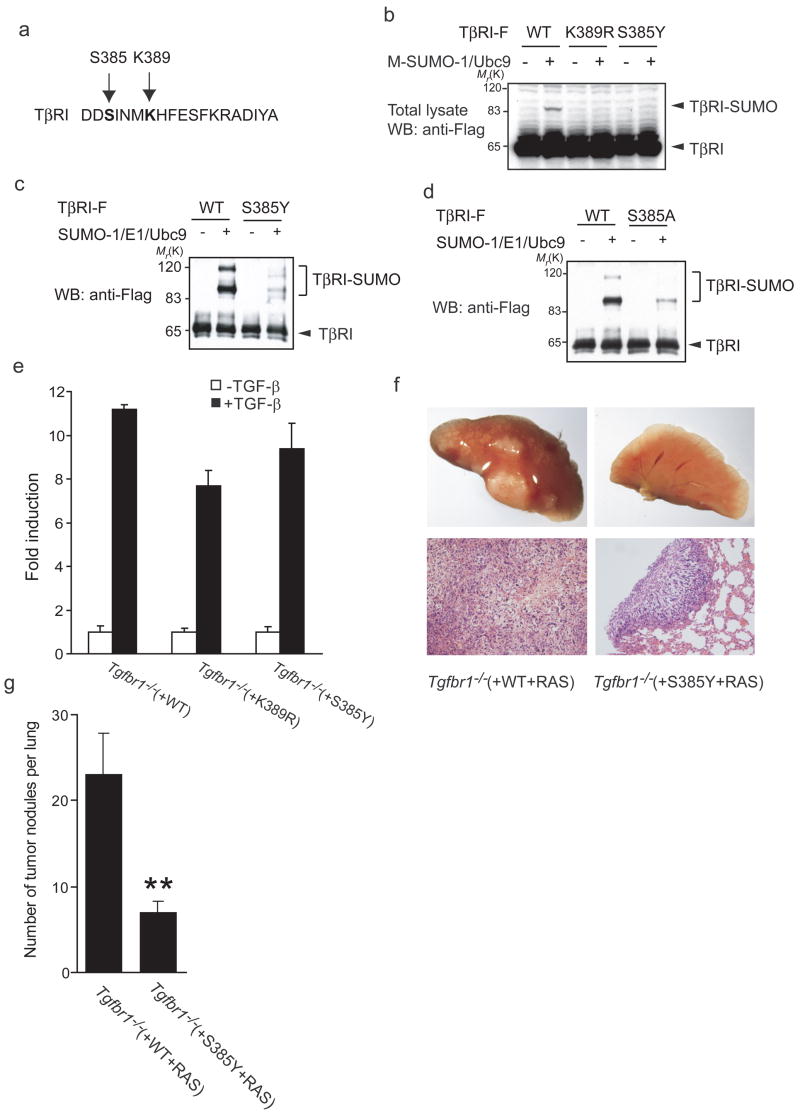Figure 6.
The Ser385Tyr mutation impairs TβRI sumoylation and function. (a, b) Ser385Tyr TβRI is not sumoylated. Panel (a) shows the rat TβRI sequence with Lys389 as sumoylation site four amino acids away from Ser385, which is equivalent to Ser387 in human TβRI. (b) 293T cells co-expressing wild-type, K389R or S385Y TβRI, with Myc-tagged SUMO-1 and Ubc9, were lysed and analyzed by western blotting to detect sumoylation. (c, d) In vitro sumoylation of S385Y mutant TβRI (c) or S385A TβRI (d) in comparison with wild-type TβRI. Immunopurified TβRI was subjected to in vitro sumoylation followed by immunoblotting to detect sumoylation. (e) Tgfbr1−/− fibroblasts stably expressing wild-type, K389R or S385Y TβRI were transfected with the Smad3-responsive (CAGA)12-luciferase reporter. Luciferase activities without or in response to added TGF-β were measured. Error bars represent mean ± s.d. (n = 3). (f) Representative pictures of lungs from mice with Ras-transformed MEFs are shown in upper panels, and corresponding H&E-stained sections of tumor nodules at the same magnification (×10 objective) are shown in lower panels. (g) Quantification of tumor nodules in the lungs. Error bars represent mean ± s.e.m. (n = 6). Double asterisk indicates P < 0.01 compared to wild-type TβRI.

